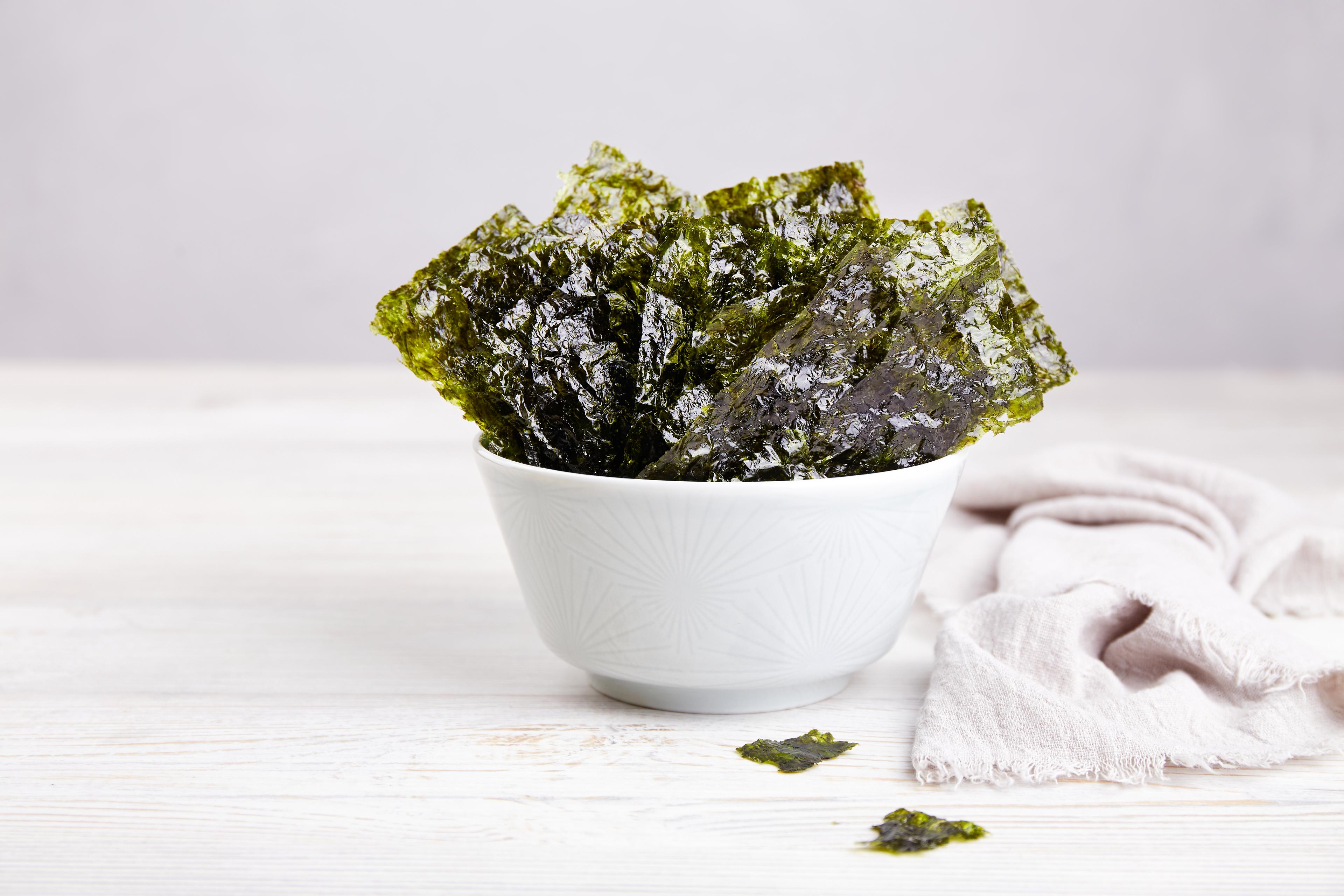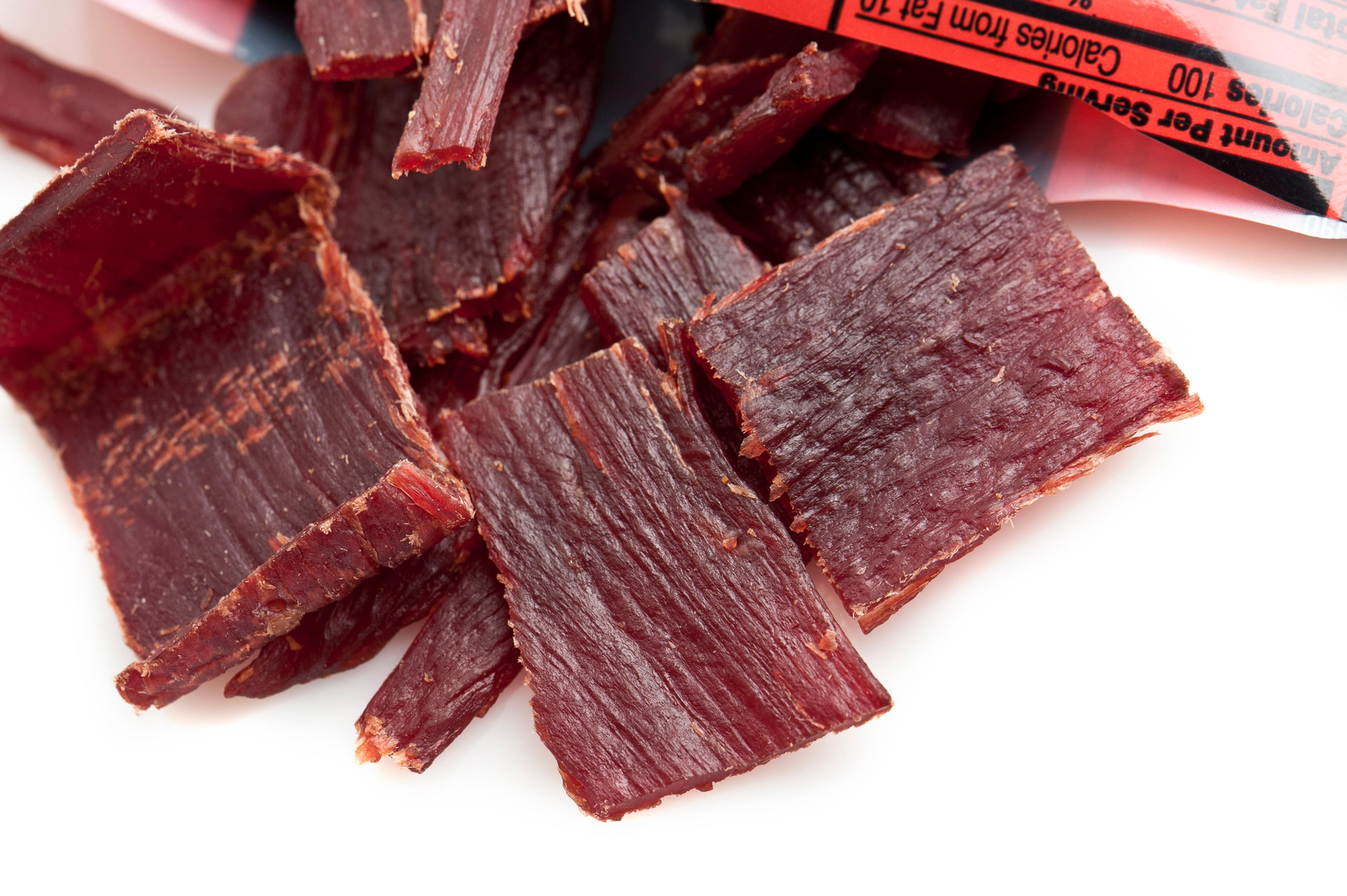Should I Try Seaweed Snacks?

Lauren Coin
| 3 min read

For centuries, seaweed has been an integral part of coastal diets, known for its unique flavor and rich nutrient value. In recent years, it’s emerged as a popular snack option in stores around the world.
Are you thinking about adding seaweed snacks to your diet? Learn more about their contents, health benefits and drawbacks.
What are seaweed snacks?
Seaweed snacks come in many different forms. They’re most commonly sold as thin sheets of dried, edible seaweed cut into squares. They may be salted or feature different flavors like wasabi or sesame.
Seaweed, also known as macroalgae, refers to a variety of ocean plants and can come in colors of red, brown and green, according to the Cleveland Clinic. Red seaweed, or nori, is used in sushi rolls and is one of the most popular choices for seaweed snacks because of its crispy texture.
According to Harvard Health, other types of seaweed commonly used in food include:
- Kombu
- Wakame
- Dulse
- Kelp
- Spirulina
- Aonori
- Ogo
- Hijiki
Are seaweed snacks healthy?
Seaweed is nutrient-packed and low in calories, fat and sugar, according to Harvard Health. Some call it a “superfood” or nutritional powerhouse because it’s full of vitamins and minerals.
Per the Cleveland Clinic, seaweed is a good source of:
- Calcium
- Iron
- Vitamin B12
- Vitamin C
- Vitamin E
- Vitamin K
- Zinc
- Iodine
As seaweed snacks are a dried version of this food, they include many similar health benefits, but the nutritional value varies depending on how the snack is prepared and what type of seaweed is used.
Benefits of seaweed
Seaweed can have other health benefits as well. According to the Cleveland Clinic, the omega-3 fatty acids, polyphenols and carotenoids found in seaweed may help prevent different diseases.
Seaweed is also high in fiber, which can help maintain healthy bacteria in your gut. Per the Cleveland Clinic, fiber helps slow your digestion so you can feel full longer. When you eat foods high in fiber you can lower your cholesterol and risk of constipation.
According to Harvard Health, some preliminary research has linked seaweed with lower levels of heart problems, healthy thyroid function and blood sugar control, but more studies are needed to determine the extent of these benefits.
Drawbacks of seaweed
It’s important to note that consuming an excess amount of seaweed can pose potential health risks.
Seaweed contains a high amount of iodine. While limited doses of this mineral are necessary for healthy thyroid function, too much of it can cause an underactive thyroid, or hypothyroidism.
According to the Harvard Nutrition Source, the recommended dietary allowance of iodine in adults is 150 micrograms per day. The tolerable upper limit is 1,100 micrograms. One serving of processed seaweed chips (around five grams) contains about 80 micrograms of iodine. The Cleveland Clinic warns that those with pre-existing thyroid conditions should be sure to watch their iodine consumption.
Depending on how seaweed snacks have been prepared and seasoned, they may be high in salt. Sodium levels vary, so be sure to check the packaging for more specific measures.
Seaweed may include high levels of heavy metals, such as arsenic, cadmium, lead and mercury, depending on where it was harvested. This is because seaweed absorbs these metals from contaminated water. Small amounts shouldn’t pose an issue, but a buildup of metal in your body increases your risk of heavy metal poisoning, per the Cleveland Clinic.
How much seaweed should I eat?
Eating seaweed and seaweed snacks in moderation is a healthy way to add nutrients and variety to your diet. Be sure to maintain a balance with other snacks and foods to ensure you’re getting a diverse range of vitamins and minerals.
Photo credit: Getty Images
Related:





